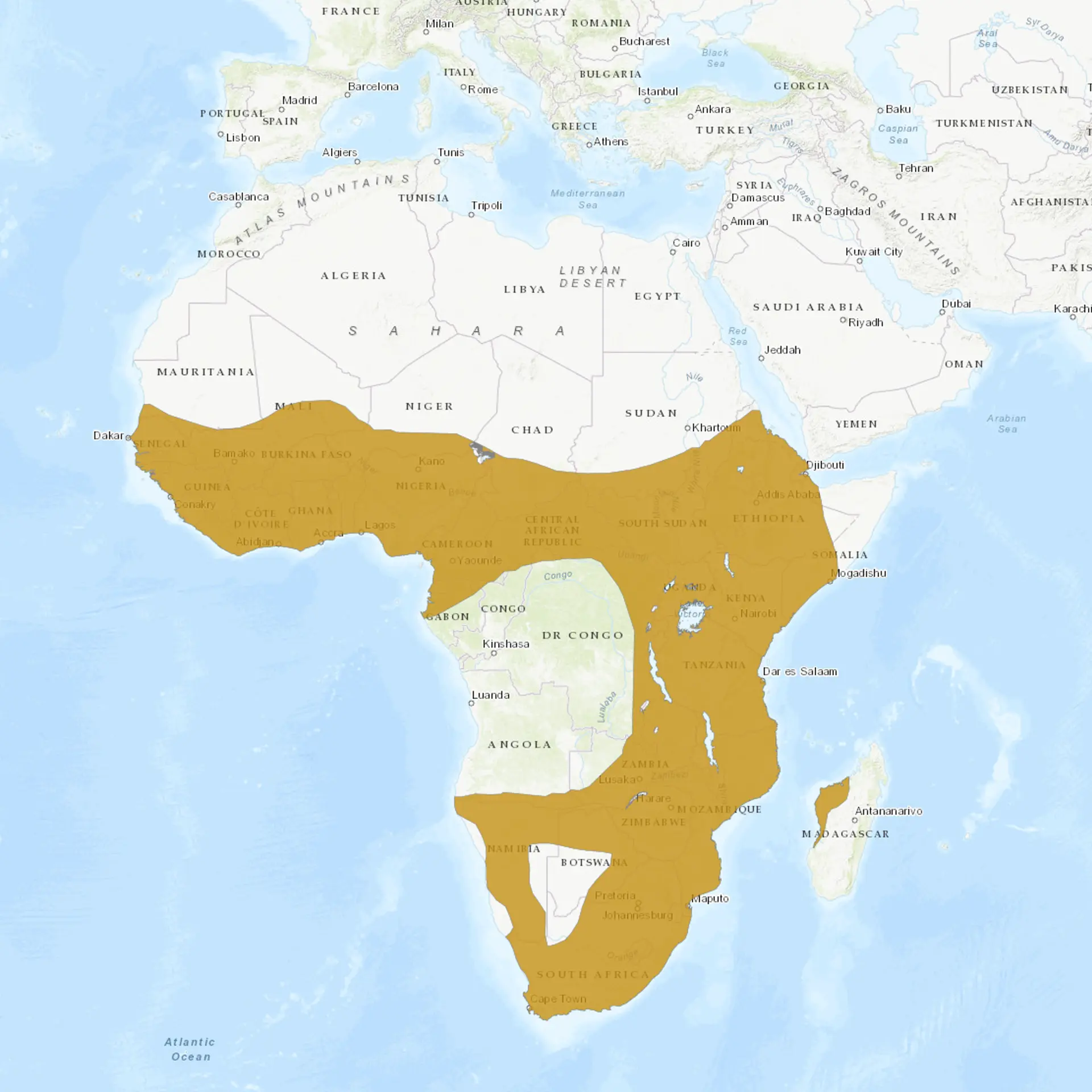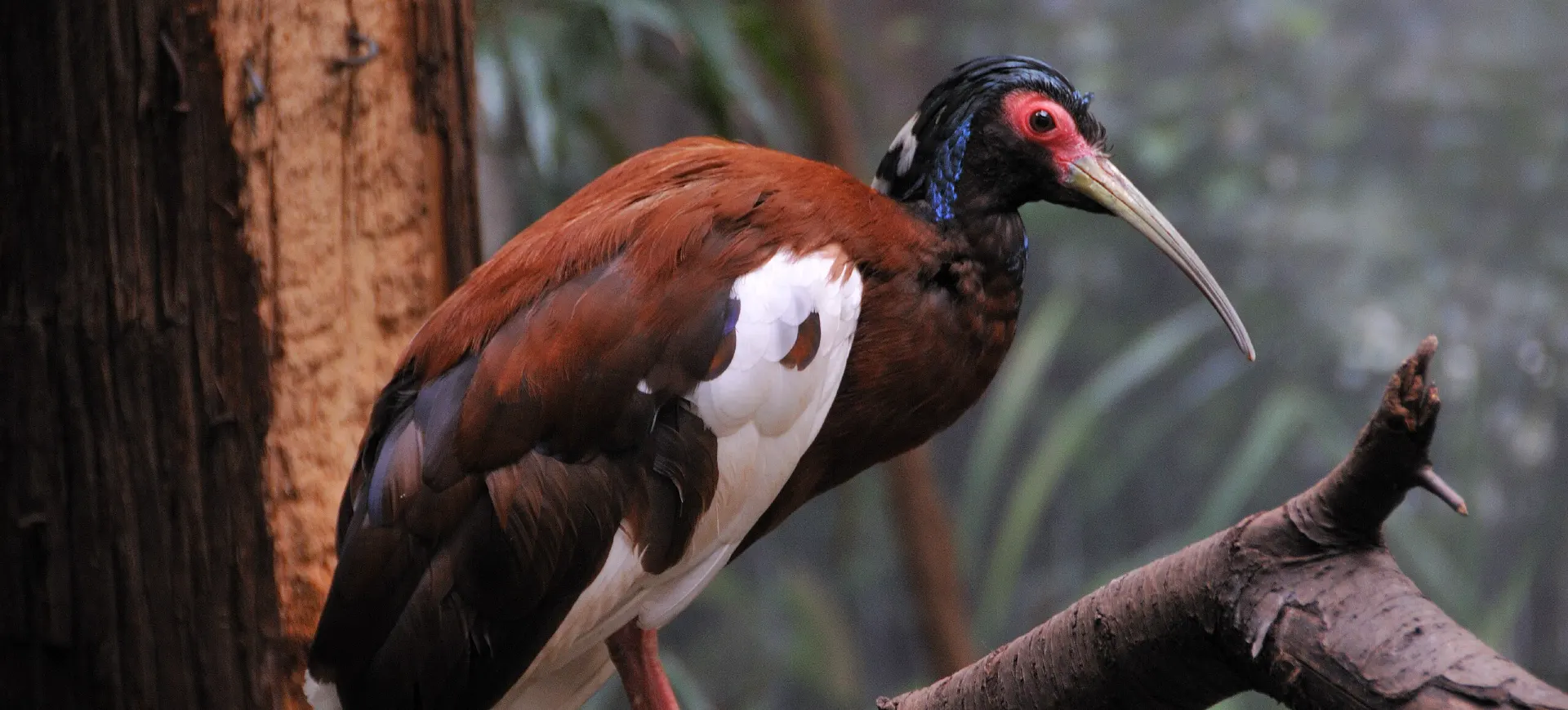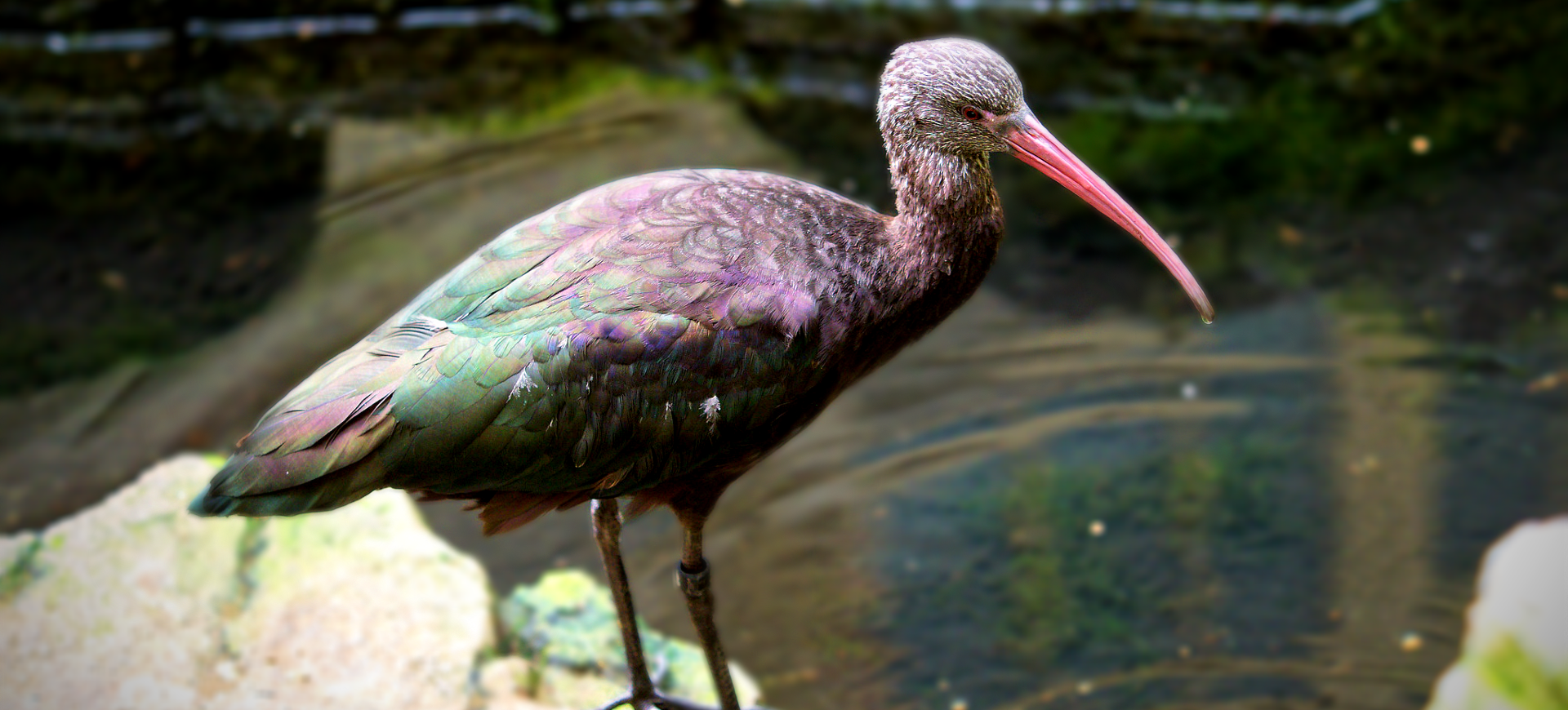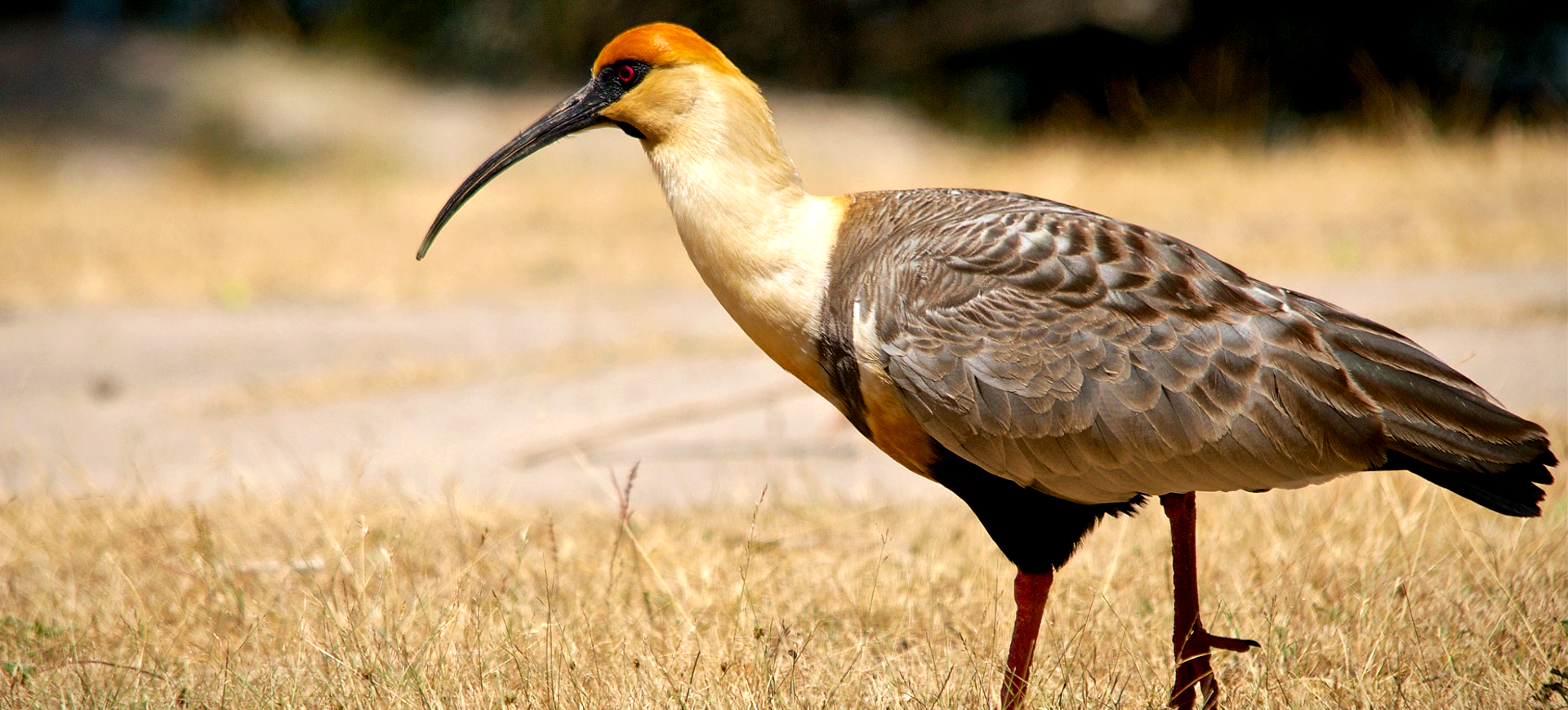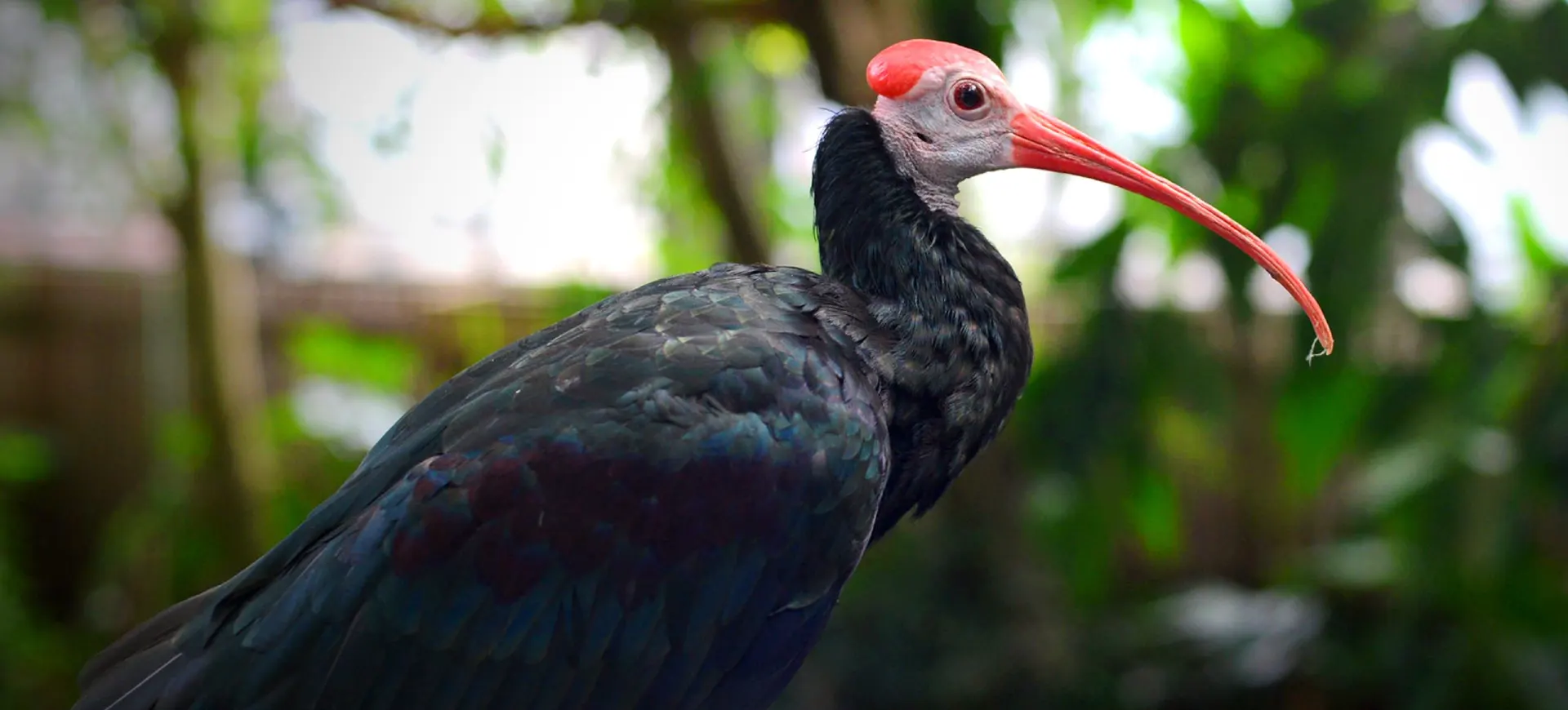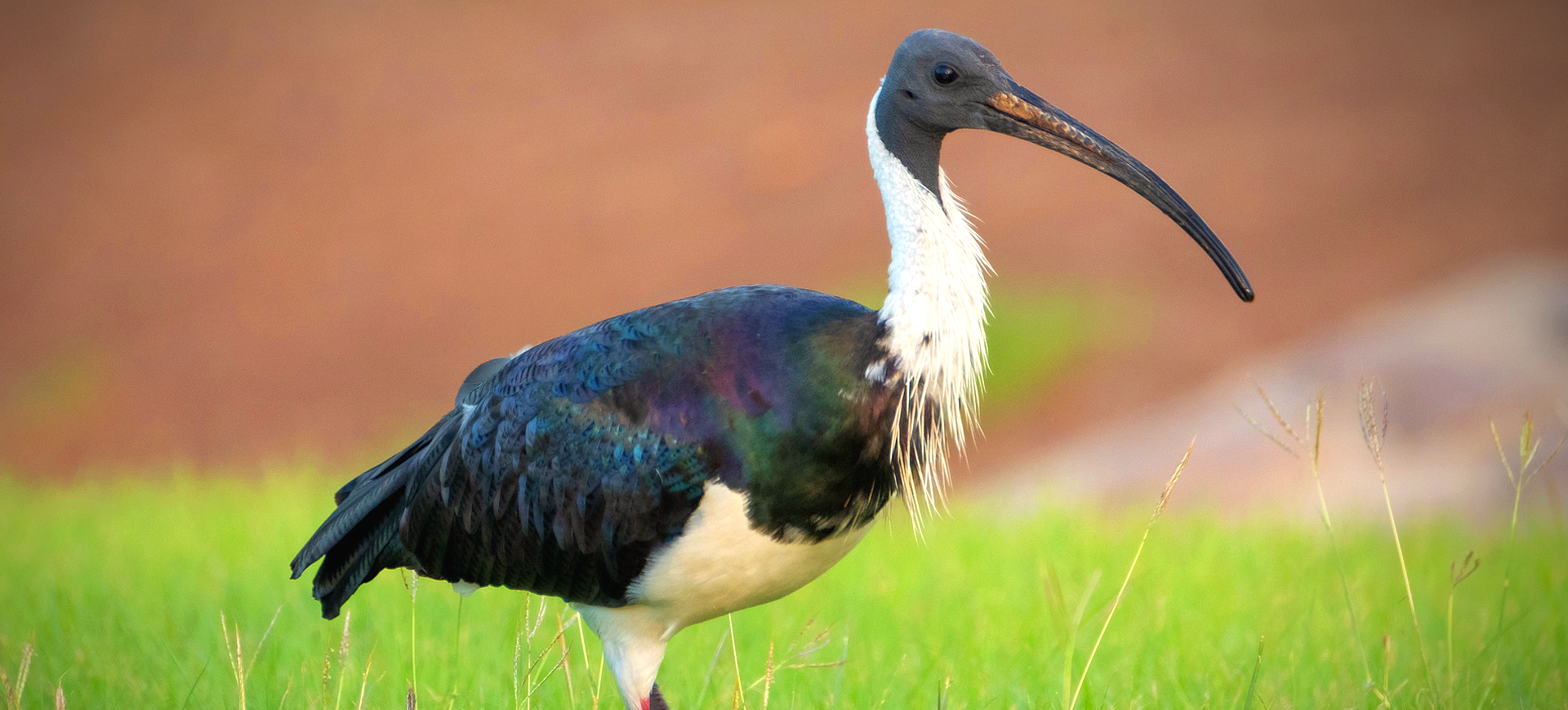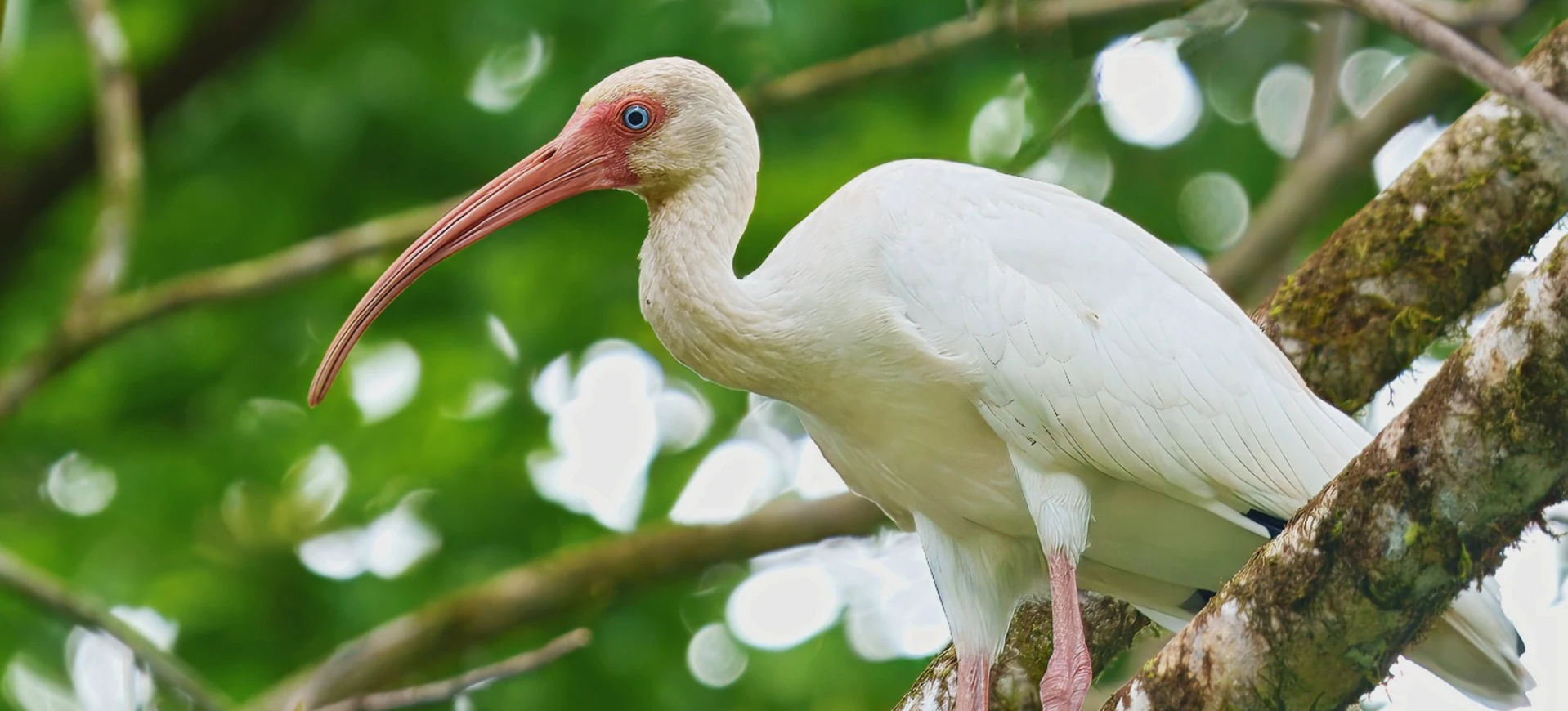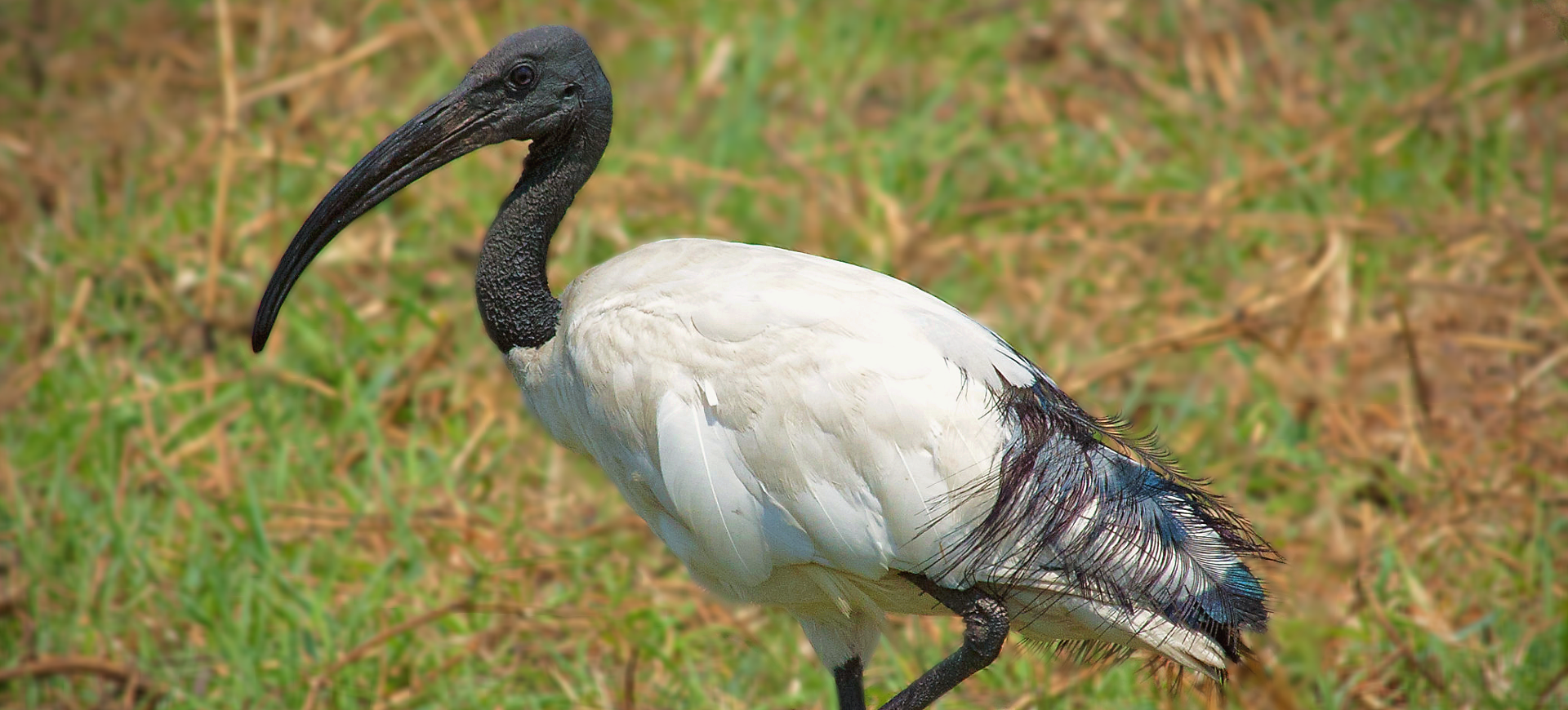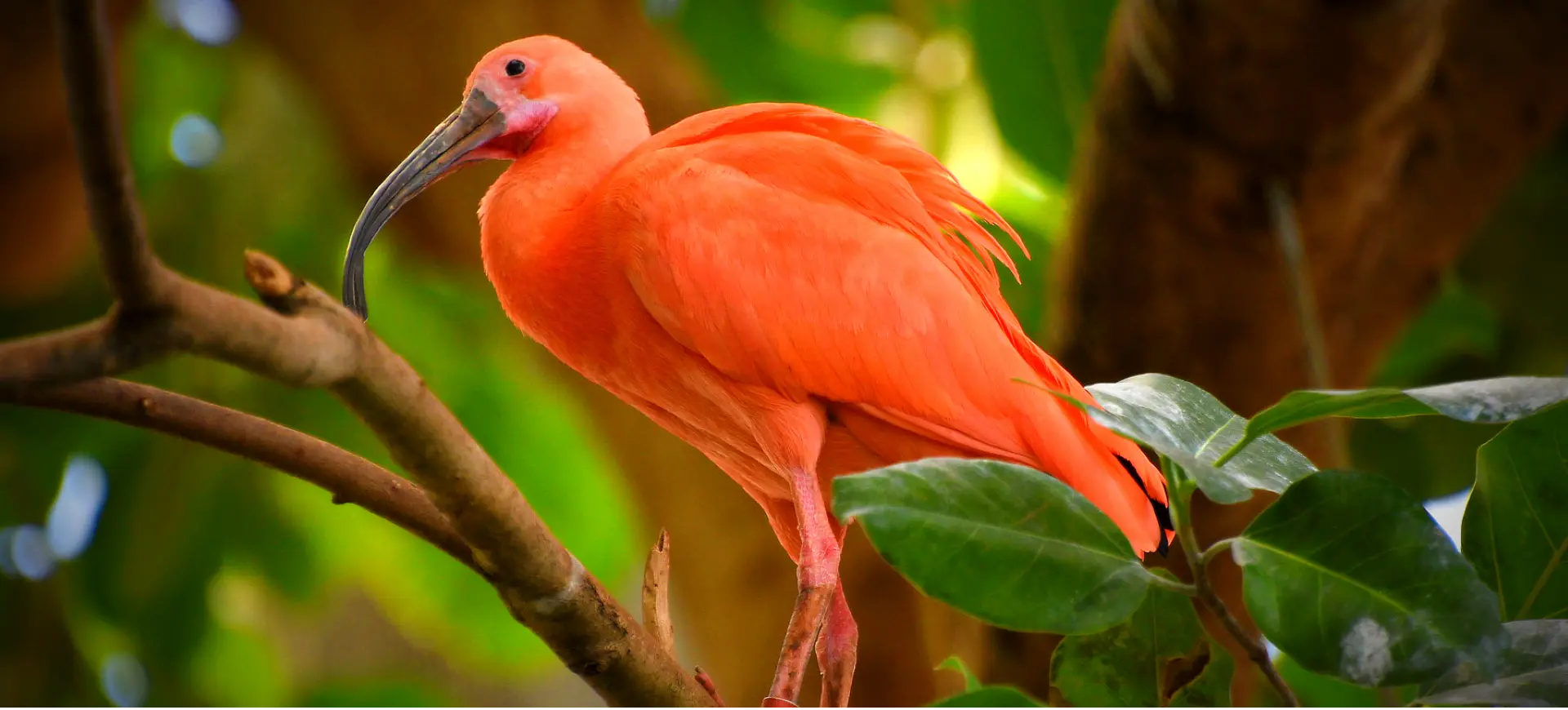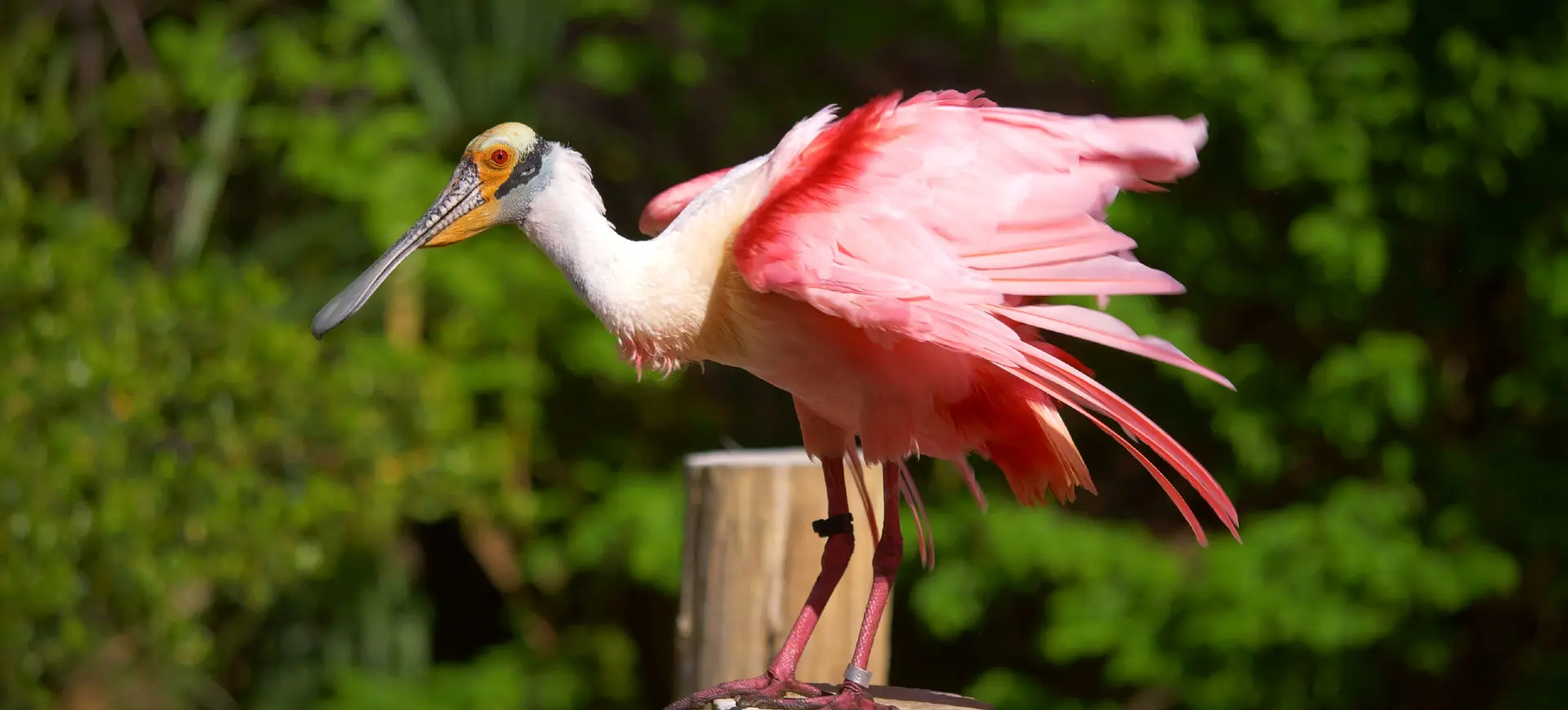Overview
The African Spoonbill (Platalea alba) is a wading bird known for its distinctive spoon-shaped bill. This species is widely distributed across sub-Saharan Africa and Madagascar, thriving in shallow wetlands. They are highly social and often seen in groups, foraging for food in shallow waters. Despite their broad range, they are not considered at risk, largely due to their adaptability to various wetland habitats.
African Spoonbills have a predominantly white plumage with a tinge of pink on their wings. They possess a long, flat, spoon-shaped bill, ideal for their feeding habits. Their legs and feet are reddish, which becomes more pronounced during the breeding season. The birds are largely silent but may emit low grunts or croaks while interacting with each other.
These diurnal birds spend most of their day foraging for food. They feed by sweeping their open bill from side to side in shallow water to capture prey. Their diet mainly consists of fish, crustaceans, and insects. African Spoonbills are also known for their distinctive feeding technique, which involves tactile hunting, making them efficient predators in murky waters.
Taxonomy
Kingdom
Phylum
Class
Order
Family
Genus
Species
Type
Current distribution:
African Spoonbills are widely distributed across sub-Saharan Africa, from Senegal and Gambia in the west to Ethiopia, Kenya in the east, and South Africa. They are also found on the island of Madagascar. The species is locally common in suitable habitats, although their distribution can be patchy. Seasonal movements are observed in response to rainfall patterns and water availability.
In Southern Africa, they are commonly found in the Okavango Delta, the Zambezi River floodplains, and various inland water bodies. They inhabit the Great Rift Valley lakes and coastal estuaries in East Africa. Their presence in West Africa is associated with large river systems and coastal lagoons. Despite their wide range, their population density can fluctuate with changes in water levels and habitat quality.
Physical Description:
The African Spoonbill is a medium-sized wading bird easily recognized by its unique bill. Its plumage is primarily white, with a slight pinkish hue visible on its wings during flight. The long legs and feet are reddish, and the eyes are red, adding to its distinctive appearance. During the breeding season, the face becomes more vivid, and the bare skin around the bill turns brighter.
Males and females are similar in appearance, though males are slightly larger. Juveniles have duller plumage with a greyish tinge and a less pronounced spoon-shaped bill. Their wings are broad and rounded, aiding in their graceful flight. The African Spoonbill’s slender body and long legs make it well-suited for its wading lifestyle.

Lifespan: Wild: ~15 Years || Captivity: ~19 Years

Weight: Male & Female: 3.3 lbs (1.5 kg)

Length: Male: 31 in (79 cm) || Female: 29 in (74 cm)

Height: Male: 32 in (81 cm) || Female: 30 in (76 cm)

Wingspan: Male & Female: 47-51 in (120-130 cm)

Top Speed: 22 mph (35 km/h)
Characteristic:
Native Habitat:
The African Spoonbill inhabits a variety of freshwater and saltwater wetlands, including marshes, swamps, and flooded grasslands. It is also found in the shallow margins of lakes and rivers, estuaries and lagoons. These birds prefer environments with abundant aquatic vegetation, which provides ample foraging opportunities. They are adaptable and can thrive in both natural and artificial wetlands.
During the breeding season, African Spoonbills are often found in colonies on islands or in dense reed beds. These locations provide safety from predators and are close to rich feeding grounds. They may disperse more widely outside the breeding season, inhabiting seasonal wetlands and temporary floodplains. Their adaptability to different wetland types makes them resilient to habitat changes.
Biomes:
Biogeographical Realms:
Continents:
Countries:
Diet:
Diet & Feeding Habits:
African Spoonbills are primarily carnivorous, with a diet that includes small fish, crustaceans, aquatic insects, and mollusks. They forage by sweeping their open bill through the water, relying on touch to detect prey. This method allows them to feed effectively even in turbid waters. They may also feed on small amphibians and occasionally plant material, though this is rare.
Their feeding activity peaks during the early morning and late afternoon. They prefer shallow waters where they can wade and sweep their bills from side to side. African Spoonbills often feed in groups, sometimes alongside other wading birds. Their tactile feeding technique is well-adapted to their wetland habitats, ensuring they can find sufficient food even in variable conditions.
Mating Behavior:
Mating Description:
African Spoonbills are monogamous, forming pair bonds that often last for several breeding seasons. They breed in colonies, often with other wading birds, building nests in trees or reed beds. Nesting sites are chosen for their proximity to water and abundant food resources. The female typically lays 2-4 eggs, which both parents incubate for about 25-29 days.
After hatching, both parents take turns feeding and caring for the chicks. The chicks fledge at around 5-6 weeks but remain dependent on their parents for several more weeks. Breeding season varies by region, often aligning with the local wet season when food is most abundant. African Spoonbills exhibit strong site fidelity, returning to the same nesting sites each year.
Reproduction Season:
Birth Type:
Pregnancy Duration:
Female Name:
Male Name:
Baby Name:
Social Structure Description:
African Spoonbills are social birds, often found in small to large groups. They are highly gregarious during breeding, forming colonies that include other wading bird species. They are still social outside of breeding but may form smaller foraging groups. Their social behavior aids in locating food and protects them from predators.
Interactions within groups are generally peaceful, though minor disputes can occur, especially over food. They communicate through body language and occasional vocalizations. These social structures are important for their survival, offering collective vigilance and cooperative foraging benefits. Group living also facilitates learning and the transfer of foraging techniques among individuals.
Groups:
Conservation Status:
Population Trend:
The African Spoonbill population is considered stable, with no significant declines reported. They are widespread across their range, and their adaptability to various wetland habitats contributes to their resilience. Local population sizes can vary, with some areas hosting large numbers during the wet season. Despite habitat loss in some regions, their ability to utilize man-made wetlands has helped maintain their population.
Conservation measures have ensured that they remain relatively unaffected by human activities compared to other wetland species. Monitoring programs in several countries help track their numbers and health. Their presence in numerous protected areas further secures their status. However, continued habitat protection is essential to ensure long-term stability.
Population Threats:
Habitat destruction and alteration are the primary threats to African Spoonbills. Wetland drainage for agriculture, urban development, and pollution can reduce the quality and availability of their habitats. In some regions, water extraction and dam construction alter natural water flows, affecting wetland ecosystems. Climate change poses a long-term threat by altering rainfall patterns and water availability.
Though not widespread, illegal hunting and egg collection can impact local populations. Disturbance from human activities, particularly during the breeding season, can lead to nest abandonment. Invasive species and introduced predators can also pose risks in some areas. Conservation efforts must address these threats to ensure the species’ continued survival.
Conservation Efforts:
Many African countries have established protected areas with significant wetland habitats, benefiting African Spoonbills. Wetland restoration projects and the creation of artificial wetlands provide additional habitats. Education and awareness programs help reduce human disturbances, especially during the breeding season. Conservation organizations monitor populations and track trends to inform management strategies.
International cooperation is crucial for migratory populations, ensuring protection across their range. Wetland conservation initiatives like the Ramsar Convention are vital in preserving critical habitats. Research on their ecology and behavior helps inform conservation actions. Ongoing efforts are essential to mitigate threats and support healthy populations.
Additional Resources:
Fun Facts
- African Spoonbills use their specialized bill to feel for prey in murky waters.
- They can often be seen standing on one leg while resting.
- During the breeding season, their face becomes more vivid with bright red skin patches.
- They are one of the six spoonbill species found worldwide.
- African Spoonbills are known to hybridize with Eurasian Spoonbills in overlapping ranges.
- They play an important role in controlling insect and fish populations in their habitats.
- Their nests are often reused and added to each year.
- They have a mutualistic relationship with cattle, feeding on insects stirred up by grazing.
- Juvenile spoonbills take about three years to develop their full adult plumage.
- Despite their wide range, they are rarely seen far from water.


